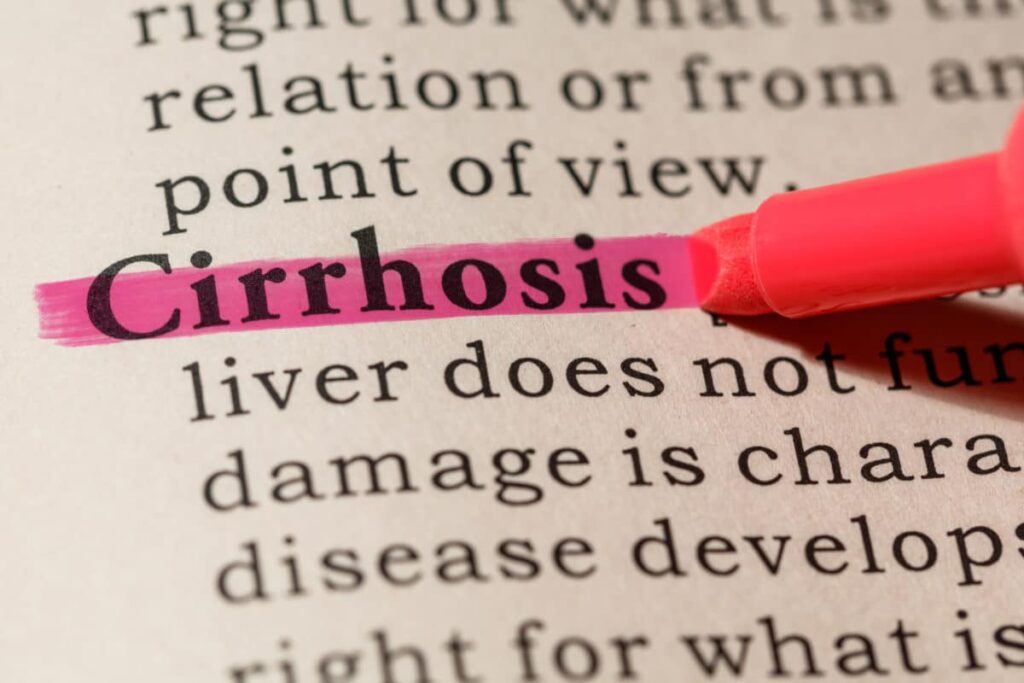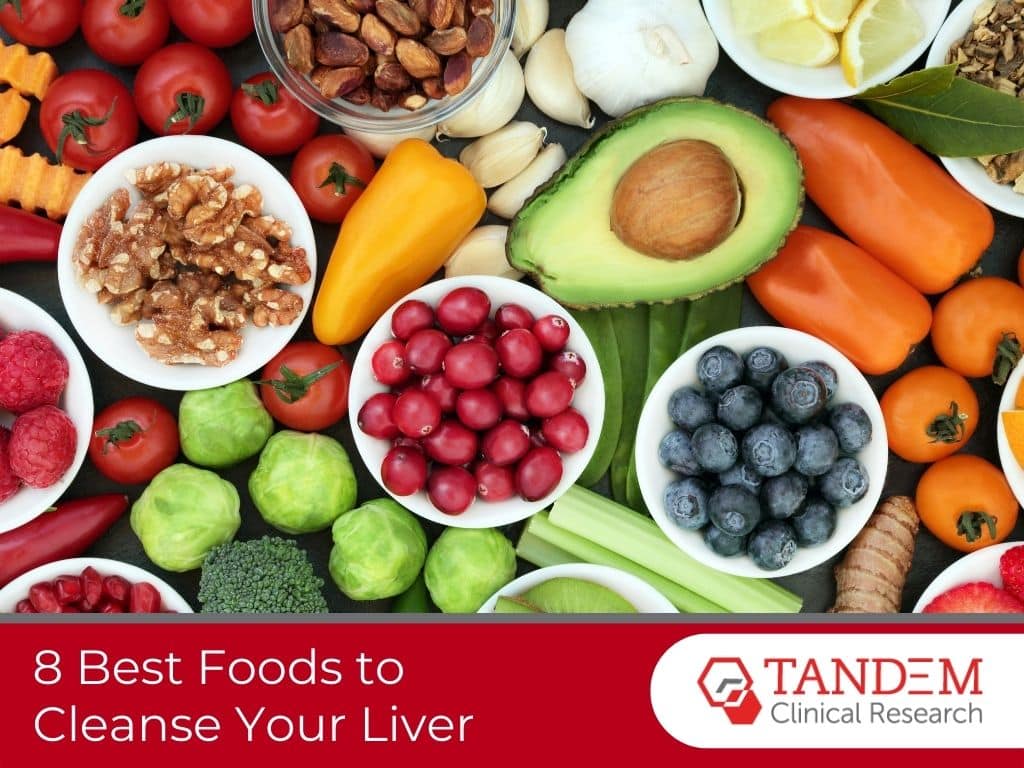When scar tissue replaces healthy liver tissue, the condition is known as cirrhosis. This is a late-stage liver disease that permanently affects the liver’s functioning. It is characterized by healthy liver cell death, inflammation, and excessive liver scarring.
Cirrhosis of the liver affects roughly one in every 400 U.S. adults and is most prevalent in patients over the age of 45. Although there is no cure for cirrhosis, there are ways to manage the symptoms and prevent further damage or complications.
About Cirrhosis of the Liver
When a patient is diagnosed with cirrhosis, their liver’s scar tissue is blocking the flow of blood and preventing the liver from adequately processing:
- Nutrients
- Hormones
- Drugs
- Natural toxins
The longer the liver is unable to function properly, the more serious the symptoms of cirrhosis become. Late-stage cirrhosis can be life-threatening and result in death.
Approximately 24% of cirrhosis-related deaths are caused by liver failure. Another 13% are caused by liver failure and gastrointestinal bleeding, and the rest are typically the result of gastrointestinal bleeding alone, primary liver cell carcinoma, and other liver complications.
What Causes Cirrhosis of the Liver?
We can injure our livers in a number of ways – by drinking too much, getting certain diseases, or taking certain medications. Every time our livers are injured, they repair themselves by creating scar tissue. If this happens too frequently, it can compromise your liver’s functioning.
Most cases of cirrhosis are caused by:
- Chronic alcohol abuse.
- Viral hepatitis (B, C, or D).
- Fatty liver disease.
- Cystic fibrosis.
- Sugar metabolism disorders.
- Iron buildups (hemochromatosis).
- Genetic digestive disorders.
In some cases, liver diseases such as cirrhosis can be drug-induced. Medications such as methotrexate, amiodarone, isoniazid, and methyldopa all have ties to cirrhosis and chronic liver problems.
Risk Factors for Cirrhosis
Patients are more likely to develop cirrhosis of the liver if they…
- Have a history of liver disease.
- Are obese.
- Abuse alcohol for many years.
- Have viral hepatitis.
- Have diabetes.
- Inject drugs using shared needles.
- Have unprotected sex.
Cirrhosis is not an inherited disease, which means it cannot be passed down from a parent to their child. However, other diseases (such as diabetes or cystic fibrosis) that cause liver damage and potentially cirrhosis can be inherited.
Risk factors for cirrhosis can also include environmental factors. For example, prolonged exposure to poisons such as arsenic can permanently damage the liver and result in cirrhosis.
Symptoms Caused by Cirrhosis of the Liver
Different patients can present different symptoms of cirrhosis, depending on the stage of their disease and its severity.
In the first parts of cirrhosis, patients may present little to no symptoms. This can make early-stage cirrhosis difficult to diagnose properly.
As the disease progresses, more serious and definitive symptoms may appear. Patients often lose their appetite and some weight, feel weak or fatigued and experience nausea. Some may even get unexplained fevers.
As liver function deteriorates, the symptoms may get worse. Late-stage cirrhosis of the liver often results in…
- Easy bruising and bleeding
- Light-colored or bloody stools
- Jaundice
- Itchy skin
- Swelling in the legs, feet, and ankles
- Inflammation of the palm of the hands
- Fluid buildup in the belly/abdomen
- Brownish or orange-colored urine
- Confusion or difficulty thinking
- Memory loss
- Personality changes
- Difficulties processing drugs/alcohol
- Hair loss
- Nosebleeds
- Vomiting blood
- Breathlessness
Men with cirrhosis may also experience a low sex drive, enlarged breasts, and/or shrunken testicles. Women may enter premature menopause and stop having their monthly cycles.
Generally, cirrhosis is painful. Most patients report experiencing dull, throbbing, or stabbing abdominal pains. Others complain of general discomfort due to the swelling caused by their bodies’ fluid retention and enlarged spleens.
Match With Clinical Trials for Cirrhosis of the Liver
Do the symptoms above sound familiar? Have you or your loved one been diagnosed with cirrhosis of the liver? You may qualify for a trial nearby. Tandem Clinical Research will match you with:
- Research groups in your area.
- Cutting-edge cirrhosis treatments.
How is Cirrhosis Diagnosed?
In most cases, cirrhosis is diagnosed by radiology testing. This includes:
- Computed tomography.
- Ultrasounds.
- Magnetic resonance imaging (MRI).
- Needle biopsy of the liver.
There are also more modern methods of testing, such as the use of elastography. This type of image testing can be used in place of a biopsy and measures the stiffness of the liver.
Once diagnosis occurs, the doctor will likely treat the patient’s symptoms by prescribing lifestyle changes, medications, or certain medical procedures.
Preventing Cirrhosis of the Liver
Although there is no cure for cirrhosis of the liver, there are ways to prevent the disease from developing and keep it from worsening. This typically includes:
Treating Cirrhosis of the Liver
Unfortunately, when a patient is told that they have cirrhosis (especially in its late stages), the permanent damage is already done. The scarring is irreversible, so the only treatment method is to prevent the disease from progressing.
If the disease is caught in its early stages and successfully managed, patients may be able to mitigate most of their risk and offset the worst symptoms. In these cases, cirrhosis treatment typically involves similar tactics to preventing the disease in the first place.
If the disease is already in its mid to late stages, treatment may involve:
- Help with alcohol dependency (support programs, rehabilitation).
- Weight loss programs.
- Medications to slow the disease’s progression.
In advanced cases, a liver transplant may be needed. Medical professionals will conduct extensive tests to understand if this is the right course of action, considering its potential complications and risks.
If internal bleeding occurs due to cirrhosis, doctors may also consider more extensive treatments such as:
- Injection sclerotherapy.
- Transjugular intrahepatic portosystemic stent shunt (TIPSS).
- Varice banding.
Patient Outlook
A cirrhosis diagnosis doesn’t necessarily mean the patient has a fatal condition. However, if the disease goes untreated, it could escalate into a life-threatening condition. That’s why it’s important to begin treatment as quickly as possible.
Ultimately, cirrhosis is responsible for 12 deaths in every 100,000 members of the United States population. It commonly reduces patients’ life expectancies and impairs their quality of living, but it is semi-treatable.
How to Care for Loved One With Cirrhosis
It’s never easy caring for a loved one with a chronic disease. If your family member or friend has cirrhosis of the liver, they may require additional support to make lifestyle changes and seek treatment.
Medical Help
One of the best ways to support patients with cirrhosis is to help them with their medications. This can include:
- Setting up a schedule for their drugs.
- Reminding them to stay on track.
- Helping them order refills as necessary.
- Organizing medical records and appointments.
- Driving them to and from the doctor or pharmacy.
In advanced cases of cirrhosis, your loved one may need help with everyday activities, such as dressing, washing, walking, and completing daily chores. You may be able to support them by assisting with household tasks and meal preparation, among other regular responsibilities.
As the disease progresses, you may want to help them implement certain aids before they are needed. For example, if your loved one is experiencing fatigue, weakness, or confusion, you may need to implement a shower chair, bed rail, or walker.
Mental Support
The liver’s cirrhosis doesn’t just affect the body’s physical state, but also your loved one’s mind. As with any chronic disease, cirrhosis often triggers feelings of stress, anxiety, and depression.
One of the best things you can do to support your friend or relative is to offer a listening ear. Hear them out about their complaints and what you can do to help them in their daily lives. Your companionship and attention can be one of the biggest supports during their vulnerable, challenging times.
Match With Clinical Cirrhosis Trials Now
Tandem Clinical Research connects patients with clinical trials for biotech, pharmaceutical, and medical device companies. If you live near New Orleans, Orlando, or New York City, we’ll help you find cirrhosis trials in your area.
Cirrhosis of the liver might not currently have a cure – but scientists haven’t stopped researching and learning about the disease.
If you or your loved one has cirrhosis, consider joining a clinical trial. Your participation can contribute to crucial discoveries, benefiting both you and future patients.



